Northern zinc-rich projects get boost
Funds for construction of roads, port may unlock floodgates North of 60 Mining News – October 1, 2019
Last updated 9/26/2020 at 5:46am
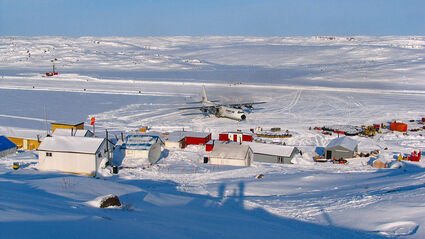
MMG Ltd.
A cargo plane touches down at the High Lake camp at MMG's Izok Corridor zinc-copper project in Nunavut. MMG says the Grays Bay Road and Port project is the key to unlocking the high-grade zinc and copper deposits in the Izok Corridor.
As the worldwide deficit in zinc production grows, several zinc-lead mining projects across northern Canada await construction of access arteries needed to deliver their ore to market. The projects are among the world's most attractive and represent a base metals treasure trove coveted by would-be developers and end users alike. Recent funding from the Canadian government and other public and private sources could unlock the floodgates to critical infrastructure development needed to spur base metals mining in Northwest Territories and Nunavut.
In mid-August, the Government of Canada, two territorial governments and the Kitikmeot Inuit Association agreed to commit more than C$60 million to the Slave Corridor Project, an initiative aimed at kickstarting development in the mineral-rich and underdeveloped Slave Geological Province, with construction of new roads and a deep-water port.
In the Northwest Territories, the funding includes C$40 million to support environmental and regulatory reviews for a road from Highway 4 to Lockhart Lake; planning of road design and alignment from Highway 4 to the Nunavut Border; and planning studies for the Slave Geological Province Corridor to make the road project shovel-ready. Transport Canada agreed to contribute C$30 million under the National Trade Corridors Fund (NTCF), while the NWT government committed C$10 million.
In Nunavut, Transport Canada committed C$21.5 million from NTCF to complete preparatory work necessary for the first phase of construction of the Grays Bay Road and Port Project, which would support mineral development in the Nunavut portion of the Slave Geological Province. Additional funding of C$7.25 million is expected later from Nunavut Tunngavik Inc., parent of the region's Inuit organization, to bring the project to shovel-ready status in the next two to three years.
Industry and regional officials applauded the funding commitments as long-awaited economic development initiatives for the North.
"It's been a long time coming, with initial discussions on these visionary projects beginning some 60 years ago," said Gary Vivian, president of the NWT & Nunavut Chamber of Mines. "By reducing the cost of accessing this remote region, its significant potential can be unlocked for the benefit of not only the NWT and Nunavut, but also for Canada. It's exciting, too, to see the KIA, an indigenous government, as a leading partner in this nation-building Canadian infrastructure development."
The proposed Slave Geological Province corridor would include over 600 kilometers (372 miles) of all-season road – about 230 kilometers (138 miles) in Nunavut and 413 kilometers (250 miles) in the NWT – connecting, for the first time, Nunavut to the rest of Canada. The long-term vision would see the corridor support road, communications and hydro transmission line infrastructure, connecting the NWT to a deep-water Arctic port in Nunavut, and creating new economic opportunities and benefits for residents of both territories.
The Grays Bay Road and Port project would create a deep-water port at Coronation Gulf in western Nunavut and a road would extend from the port to the former Jericho diamond mine, located some 230 kilometers (138 miles) away.
The project is expected to make mining projects in western Nunavut more economical and potentially reduce cost for community resupply.
"We are very happy with the outcome... we feel good about where we are," said Scott Northey, CEO of Nunavut Resources Corp., a subsidiary of the Kitikmeot Inuit Association, referring to the new financing.
Northey told reporters that the parties on both sides of the Nunavut-NWT border are working cooperatively.
Describing the Grays Bay Road and Port as a "nation-building project," some Nunavut officials even compare it to Canada's nationwide railway construction of the 1800s.
They point out that the proposed Grays Bay road would provide the first permanent land-based transportation link between any part of Nunavut and the rest of Canada.
The road and port project would create an estimated 1,260 full-time jobs annually during three years of construction and 1,400 full-time jobs during 11 years of initial operations, according to a recent economic assessment. The report also found that the project could generate C$189.5 million for Nunavut's gross domestic product and the territorial government would collect as much as C$85 million in tax revenues from construction.
The road also would provide access to the Izok and High Lake deposits located in Nunavut and numerous other potential mining projects in the region and eventually in the Northwest Territories' Slave Geological Province.
Welcoming the new funding, Geoffrey Gao, CEO of MMG Ltd., said road and port access "is the key to unlocking the Izok Corridor, which hosts some of the world's most attractive undeveloped zinc and copper deposits."
MMG is developing the Izok and High Lake projects.
"Together, the Grays Bay Road and Port and the Izok Corridor Project, could bring tremendous opportunities for Canadians to build and operate these projects, and will enhance economic growth and social development in Nunavut and the Northwest Territories," Gao said in an Aug. 14 statement.
Izok is a zinc-copper deposit. Discovered in 1973, enough data has been gathered at Izok to estimate grade and tonnage, and as of 1991, there were two known tabular-shaped ore bodies of unknown dimensions. The project's current mineral resource totals 15 million metric tons at 13 percent zinc and 2.3 percent copper. The High Lake deposit located north of Izok also has a mineral resource of 14 million metric tons at 3.8 percent zinc and 2.5 percent copper.
MMG also holds several other base metal deposits and exploration tenements in this highly prospective region.
Located near the Arctic Circle and with no supporting infrastructure, these resources have remained undeveloped since their discovery roughly a half-century ago.
For the next couple of years, Nunavut Resources Corporation officials plan to focus on completing the road and port project's environmental assessment process, finalizing the design, drilling at future bridge sites along the route and completing community consultations.
The plan is for the Grays Bay road to link up with the NWT's proposed road through the Slave Geological Province in the future.
Road access for NWT project
While Nunavut is seeing the beginning of infrastructure development that could boost zinc production, one zinc project in Northwest Territories appears to be closing in on permits to build a critical access road.
At the Prairie Creek zinc-lead-silver project, developer NorZinc Ltd. (formerly Canadian Zinc Corp.) is awaiting regulatory approval of an all-season access road that will link the proposed mine to the region's existing road system in southwestern Northwest Territories. The project is located on land surrounded by Canada's Nahanni National Park Reserve. About 80 kilometers (50 miles) of the western portion of the 174 kilometers (108 miles) access road crosses the reserve. Both the Mackenzie Valley Land and Water Board and Parks Canada issued draft permits in mid-August that would allow the developer to proceed with the first of two phases of construction – the access road - in 2020.
The mine will be an underground operation, based primarily on mining the Main Quartz Vein, with a steady state production rate of 1,600 metric tons per day over a 15-year mine life. In 2021 and 2022, the main site construction will be completed, including installation of a dense media separation circuit, new backfill plant, electrical facilities, flotation circuits, as well as underground development to access high-grade ore for the initial years of operation. Most underground development for the current 15-year mine life is planned to be completed between 2021 and 2024.
The Prairie Creek Mine project contains 7.6 million metric tons of proven and probable reserves grading 8.9 percent zinc; 8.3 percent lead and 128 grams per metric ton silver, which ranks Prairie Creek among the highest-grade base metal deposits in the world. These reserves are based on 8.7 million metric tons of measured and indicated resources grading 9.5 percent zinc; 8.9 percent lead and 136 g/t silver; along with 7 million metric tons of inferred resource grading 11.3 percent zinc, 7.7 percent lead, and 166 g/t silver.
In May, Scott Fulton was appointed project manager of Prairie Creek.
Alan Taylor, NorZinc's longtime chief operating officer and vice president of exploration, retired July 31.
NorZinc President and CEO Don MacDonald credited Taylor's 26 years of leadership, tenacity and persistence with being the driving force behind the advances made at the Prairie Creek Mine.

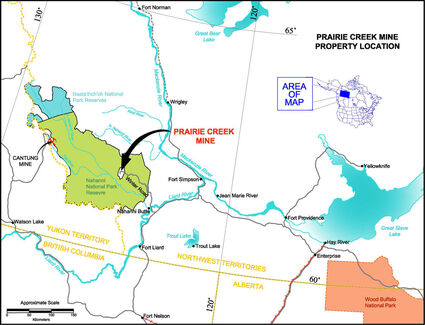
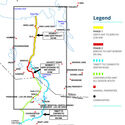
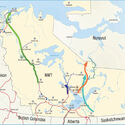

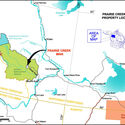















Reader Comments(0)